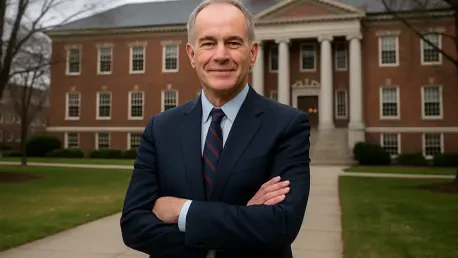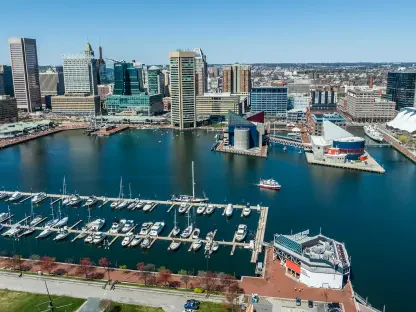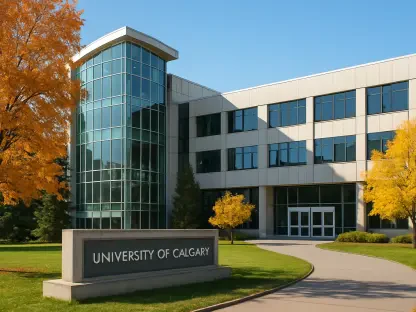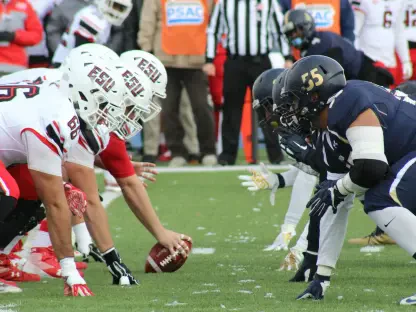Imagine a university campus thrown into disarray as its president abruptly resigns under political fire, leaving faculty, students, and stakeholders scrambling for stability in an environment that desperately needs strong leadership. This scenario is becoming all too common in higher education across the United States, where a wave of presidential turnover has sparked concern about the future of academic leadership. With numerous high-profile exits in a single month, the challenges facing college presidents have come under intense scrutiny. This roundup gathers insights, opinions, and strategies from various industry observers, educators, and governance experts to unpack the reasons behind this surge, compare differing viewpoints on its implications, and explore potential solutions for fostering resilience in higher education leadership.
Exploring the Crisis in Higher Education Leadership
The rapid turnover of college presidents has emerged as a pressing issue, reflecting deeper systemic tensions within academia. Reports indicate that multiple leaders stepped down recently under intense pressure, whether from political controversies, financial struggles, or internal disputes. This instability raises questions about the sustainability of the presidential role in an era of heightened expectations and conflicting demands. By compiling perspectives from diverse sources, this discussion aims to shed light on why these exits are happening at such an alarming rate and what can be done to address the underlying causes.
Beyond the immediate impact on individual institutions, the broader consequences of this trend affect academic integrity and institutional trust. Many in the field argue that without stable leadership, universities struggle to adapt to evolving social, political, and economic landscapes. This roundup seeks to present a balanced view by drawing on varied opinions, ranging from those who see turnover as a symptom of inevitable change to others who warn of a looming crisis if systemic issues remain unaddressed.
Unpacking the Drivers of Presidential Exits
Political Pressures and Public Backlash
One dominant factor driving presidential turnover is the growing influence of political agendas on university governance. Observers note that leaders often find themselves caught in the crosshairs of ideological battles, with conservative and progressive forces alike exerting pressure on campus policies. For instance, cases where presidents resigned due to controversies over classroom content or protest management highlight how external scrutiny can quickly escalate into career-ending conflicts. Many commentators express concern that such interference undermines academic freedom, leaving leaders with little room to maneuver.
On the other hand, some perspectives suggest that political pressures are a natural consequence of higher education’s public role. Certain analysts argue that universities, as recipients of public funding, must remain accountable to broader societal values, even if it means navigating contentious debates. This viewpoint emphasizes the need for presidents to develop stronger communication strategies to manage stakeholder expectations, rather than viewing political involvement solely as a threat to autonomy.
A third angle focuses on the personal toll of such public battles. Insights from academic circles reveal that the emotional and professional strain of constant scrutiny often pushes leaders to step down prematurely. There is a growing call for institutional policies that shield presidents from becoming scapegoats in cultural wars, with suggestions for clearer boundaries between political influence and academic decision-making.
Financial Challenges Pushing Leaders Out
Another critical driver of turnover lies in the financial instability plaguing many institutions. Industry watchers point out that declining enrollment, coupled with unexpected crises like cyberattacks, has left some universities on the brink of collapse, forcing presidents to make unpopular decisions. Such fiscal strain often leads to criticism from internal and external stakeholders, accelerating leadership changes when recovery seems elusive. The consensus among many is that financial woes create a no-win situation for presidents who must balance budgets at the expense of academic priorities.
Contrasting views emerge on how financial challenges should be addressed. While some experts advocate for aggressive cost-cutting measures and mergers with stronger institutions as a path to stability, others caution against prioritizing short-term fixes over long-term mission goals. They argue that such strategies risk diluting the unique identity of smaller colleges, potentially alienating key constituencies like alumni and faculty who value tradition.
A more optimistic perspective highlights the potential for financial crises to spur innovation. Several thought leaders in higher education governance suggest that turnover can open doors for new presidents with fresh ideas, such as forging strategic partnerships or diversifying revenue streams. These insights underscore the dual nature of financial strain as both a catalyst for exits and an opportunity for transformative leadership if supported by robust institutional backing.
Internal Conflicts and Governance Failures
Internal disputes and breakdowns in governance also play a significant role in the turnover surge. Feedback from university boards and faculty associations indicates that clashes over management styles or ethical scandals often lead to abrupt departures. Such conflicts reveal a lack of alignment between presidents and their governing bodies, creating environments where trust erodes rapidly. Many agree that these internal battles are not just personal but symptomatic of deeper structural flaws in how universities are run.
Differing opinions surface on the root of governance issues. Some sources within public institutions point to the complexities of balancing state oversight with campus autonomy as a key tension, while those in private colleges often cite insular decision-making processes as the culprit. Despite these variations, there is a shared recognition that without transparent communication and mutual accountability, internal strife will continue to destabilize leadership.
An additional layer of insight comes from those who study organizational dynamics in academia. They propose that governance failures are often exacerbated by external pressures, creating a vicious cycle where internal and external challenges feed off each other. Recommendations include systemic reforms like regular board training and conflict resolution mechanisms to prevent disputes from spiraling into full-blown crises that cost leaders their positions.
The Changing Landscape of Presidential Responsibilities
The very nature of the college presidency is evolving into a high-stakes role that demands a delicate balance of diplomacy, vision, and resilience. Many in the academic community observe that presidents must now juggle diverse stakeholders—ranging from politicians to students—while navigating cultural and ideological divides. This shift has made the position more challenging, with some describing it as a lightning rod for every institutional controversy, whether related to policy or public perception.
Contrasting analyses explore whether this evolution signals an untenable job or an opportunity for redefinition. Certain commentators argue that the role has become too burdensome without adequate support, pointing to the high rate of abrupt exits as evidence of burnout. Others, however, see potential in reframing expectations, suggesting that boards and faculty must share more responsibility in shielding leaders from overwhelming demands.
A forward-looking perspective emphasizes the need for better preparation and resources for incoming presidents. Insights gathered from leadership development programs stress the importance of training in crisis management and stakeholder engagement to equip leaders for today’s multifaceted challenges. There is a growing belief that without such support, the presidency will remain a revolving door, deterring capable candidates from stepping into the role.
Key Takeaways and Strategies for Stability
Synthesizing the varied opinions, it becomes clear that political interference, financial instability, and governance breakdowns are converging to fuel unprecedented turnover among college presidents. Many sources agree that stronger board support is essential, with specific calls for policies that protect leaders from external overreach while fostering internal collaboration. Clear guidelines on political engagement are also frequently mentioned as a way to reduce friction between universities and lawmakers.
Practical strategies include financial restructuring plans tailored to institutional needs, ensuring that fiscal health does not come at the expense of academic mission. Additionally, numerous voices advocate for investment in leadership development programs to prepare the next generation of presidents for the complexities of the role. These actionable steps aim to create a buffer against the pressures that drive turnover, promoting a more sustainable model of academic leadership.
Engagement from all stakeholders is seen as vital to addressing this crisis. Encouraging advocacy for academic autonomy and supporting initiatives that prioritize long-term stability over short-term wins can help reshape the environment in which presidents operate. These collective efforts are viewed as critical to preventing further erosion of trust and effectiveness in higher education governance.
Reflecting on Lessons Learned
Looking back, the discussions around college president turnover revealed a landscape marked by both instability and the potential for renewal. The insights gathered from diverse sources painted a picture of a role under immense strain, yet also highlighted pathways toward resilience through systemic support and innovative approaches. The varied perspectives underscored that no single solution fits all contexts, but a shared commitment to protecting academic leadership emerged as a unifying theme.
As a next step, stakeholders were encouraged to prioritize building robust support structures around presidents, ensuring they can lead with vision rather than fear of the next crisis. Consideration of mentorship programs for new leaders and policy reforms to limit external interference stood out as actionable measures. These efforts aimed to transform the challenges of turnover into opportunities for strengthening higher education for years to come.









